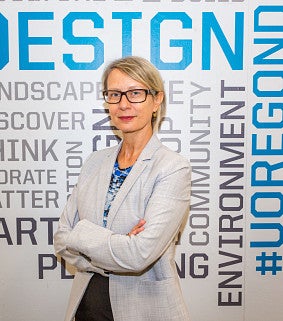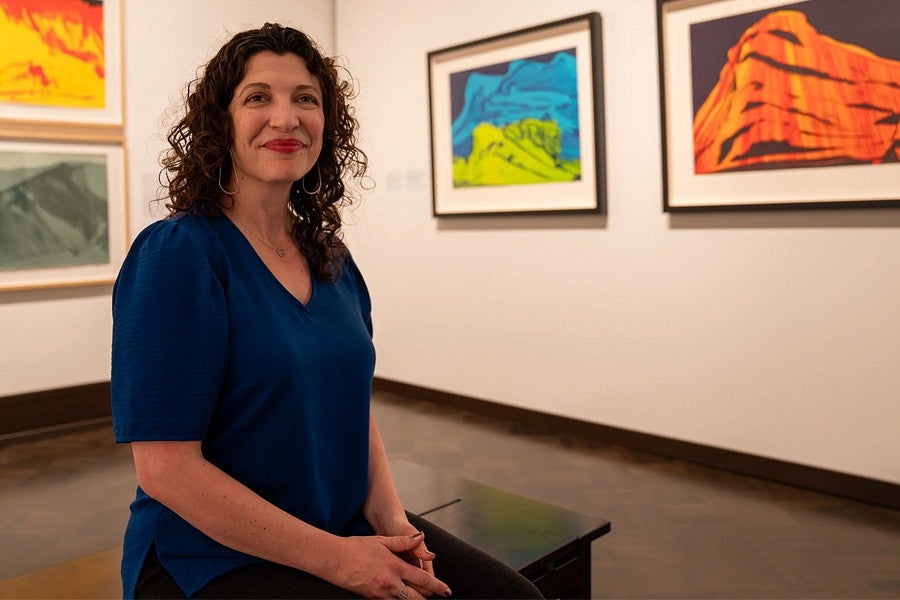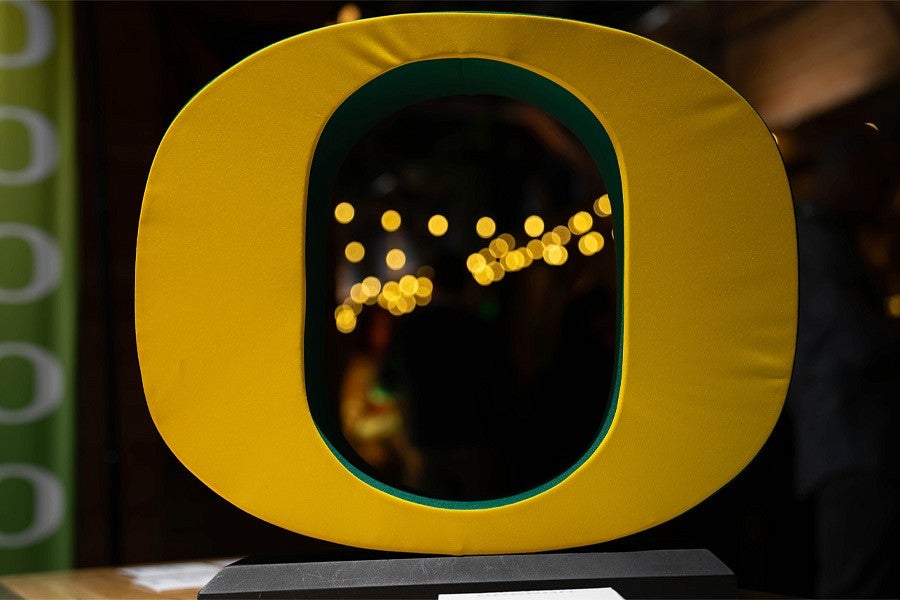
The College of Design is committed to the principles of civic responsibility, environmental sustainability, international understanding, and interdisciplinary education. Innovation thrives here in our cooperative and future-focused learning environment. We support diverse perspectives, beliefs, and cultures and are committed to fostering a welcoming and inclusive community.
We offer undergraduate and graduate accredited degrees in Eugene, nestled in the lush Willamette Valley, and in Portland's Concordia district, University of Oregon’s hub of activity, discussion, and engagement in Portland. Students can also take advantage of many varied field school and study abroad opportunities to enrich their academic experiences with hands-on ones.
Students come here ready to explore, learn, and create. When they graduate, they leave with the ability to question critically, think logically, communicate clearly, act creatively, and live ethically. We provide the skills and mentorship needed for our students to tackle complex global challenges and positively affect the people, communities, and environments around them.
Meet Dean Adrian Parr Zaretsky

Adrian Parr Zaretsky, PhD, is an internationally recognized environmental, political, and cultural thinker and practitioner and is a transdisciplinary scholar working at the intersection of architecture criticism, aesthetics, political theory, and environmental studies. She is the Dean of the College of Design at the University of Oregon, a Senior Fellow of DesignIntelligence, and is currently serving as the UNESCO Chair on Water and Human Settlements. Prior to joining the University of Oregon, she served as the Dean of the College of Architecture, Planning and Public Affairs at the University of Texas at Arlington, and as the Director of the Taft Research Center at the University of Cincinnati.
College Structure
The College of Design is composed of three schools and one independent department.
Our Mission and Values
The College of Design is dedicated to advancing the understanding, value, and quality of visual culture and the built, natural, and social environments through excellent and distinctive teaching, research, and creative endeavors. Grounded in a unique multidisciplinary structure, the College of Design is a diverse learning community of students, faculty and staff members. We seek to enhance the lives of individuals and communities through endeavors that stem from intellectual curiosity, critical thinking, and broad inquiry, rooted in the inter-relatedness of theory, history, and practice.
In support of this mission, the College of Design affirms the following values:
Excellence
Supporting and celebrating a culture that promotes rigor, encourages risk-taking, and challenges standards in creating, composing, and presenting ideas.
Open Discourse
Fostering the open exchange and critique of ideas in an environment that welcomes a diversity of views.
Inclusiveness
Actively encouraging the presence and participation in the school of individuals with differing backgrounds, experience, and points of view.
Cooperation
Working together in shared efforts to teach, learn, understand, and create.
Interdisciplinary Experience
Engaging multiple disciplines to expand our perspectives and enrich our teaching, research, and creative practice.
Responsibility
Recognizing our accountability for the impact of our actions on environmental, social, and cultural systems.
Diverse, Equitable, and Inclusive Community
The College of Design is committed to fostering a welcoming and inclusive community, increasing access, and enhancing the student experience.
The College of Design Diversity Action Plan was developed in 2017, with input from community members across the college. The Dean’s Fellow for Diversity chairs the college's Equity and Inclusion Committee and leads strategic initiatives, including implementing the Diversity Action Plan.
Honoring Native Peoples and Lands
The College of Design is located on Kalapuya ilihi, the traditional indigenous homeland of the Kalapuya people. Following treaties between 1851 and 1855, Kalapuya people were dispossessed of their indigenous homeland by the United States government and forcibly removed to the Coast Reservation in Western Oregon. Today, Kalapuya descendants are primarily citizens of the Confederated Tribes of Grand Ronde and the Confederated Tribes of Siletz Indians, and they continue to make important contributions to their communities, to the University of Oregon, to Oregon, and to the world.
In following the Indigenous protocol of acknowledging the original people of the land we occupy, we also extend our respect to the nine federally recognized Indigenous nations of Oregon: the Burns Paiute Tribe, the Confederated Tribes of the Coos, Lower Umpqua and Siuslaw Indians, the Confederated Tribes of the Grand Ronde, the Confederated Tribes of Siletz Indians, the Confederated Tribes of the Umatilla Indian Reservation, the Confederated Tribes of Warm Springs, the Coquille Indian Tribe, the Cow Creek Band of Umpqua Tribe of Indians, and the Klamath Tribes. We express our respect to the many more tribes who have ancestral connections to this territory, as well as to all other displaced Indigenous peoples who call Oregon home.
News
Stay up to date with the latest research and happenings in the College of Design.



